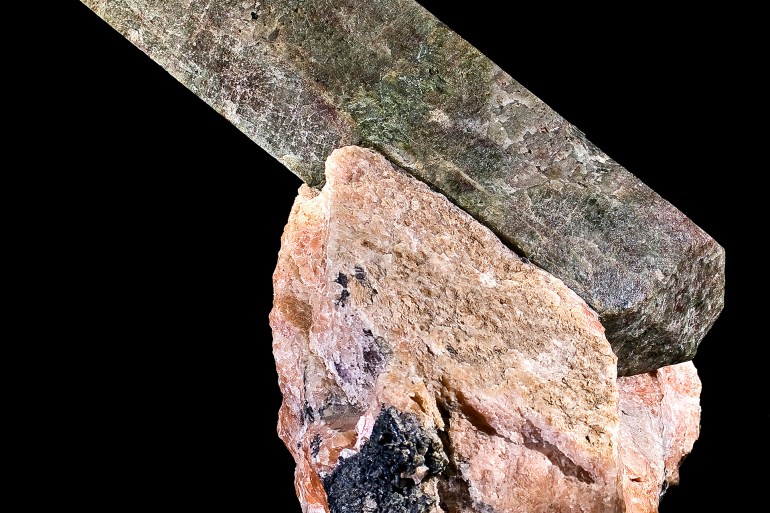In an unprecedented discovery, a Chinese research team was able to solve a dilemma that has been troubling researchers in this area for decades, which is the question of the source of the water on the moon's surface: is it coming from outside or was it on its surface billions of years ago?
To reach an answer to this question, the researchers did not examine the waters of the lunar poles or craters, but rather used a lunar mineral spectrometer to examine 11 samples of lunar rocks and soil, as well as 8 confirmatory laboratory samples.
The deceptive hydroxyl
According to the study published by this research team in the journal Nature Communications on the 14th of this month, the main goal of the scientists was hydroxyl molecules, which are composed of a hydrogen atom that combines with one oxygen atom.
Hydroxyl is the form of water produced during chemical reactions, and then if researchers were able to prove its presence in the original moon’s composition, then this means that water was part of the original moon’s composition as well.
Apatite is a phosphate-rich crystalline mineral found naturally on the Moon and Earth (Wikimedia Commons)
For this reason, samples were collected from the surface of the moon in a very special circumstance, when it is at its hottest temperature, about 95%, and this means a very dry condition in which any percentage of water in the sample will evaporate.
According to the new study, when examining the samples, it was found that despite this severe drought, there were still signs of hydroxyl molecules at a rate of 28 parts per million in apatite, a crystalline mineral rich in phosphates found naturally on the moon, as well as on Earth.
The press release issued by the "Chinese Academy of Sciences" pointed out that water played an important role in the formation and crystallization of the lunar basaltic magma that was formed more than one billion years ago, and this will be useful in the future in studying the evolution of the geology of the moon over time.
rock snatchers
China obtained these lunar samples via Chang'e-5, an automated spacecraft of China's Lunar Exploration Program, with the specific goal of bringing at least two kilograms of lunar soil and rocks back to Earth for study.
The Chang'e-5 spacecraft has already succeeded in its mission, and it was launched on November 23, 2020 from the Wenchang Satellite Launch Center from Hainan Island in the South China Sea, and then landed on the moon. On the first of December 2020, in the northwest region of the ocean of storms (Oceanus Procellarum), specifically on geological pieces that are about one billion and 210 million years old.
On December 3, 2020, the spacecraft set off again on its way to Earth, and the samples reached the hands of Chinese scientists two days later, and research began on them in a very cautious atmosphere for fear of contamination.
Chang'e's ambitious program is expected to continue with its plan and launch Chang'e-6 to bring samples to Earth from the Aitken basin near the lunar south pole, one of the largest known impact craters in the entire solar system. It is also the largest, deepest and oldest known geological basin on the Moon.

